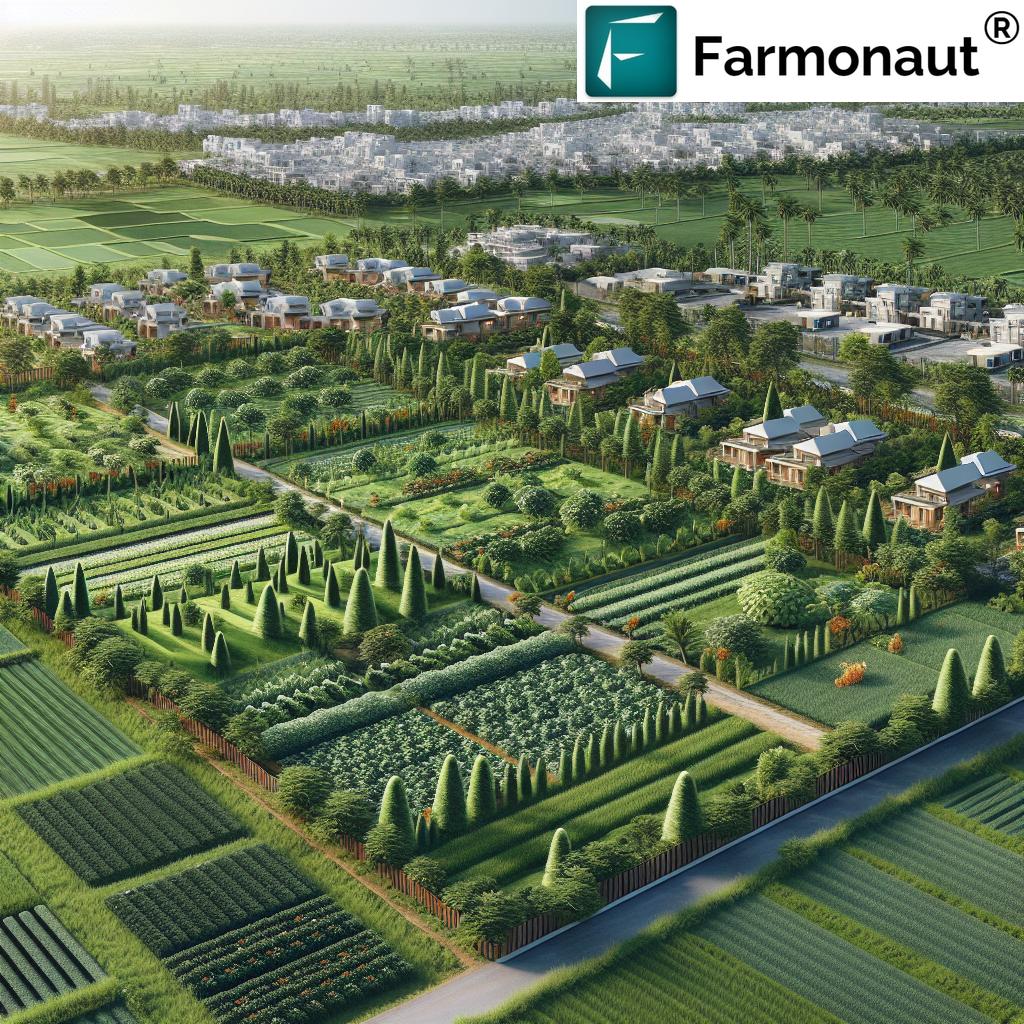Parrotia persica, Parrotia persica Vanessa: 7 Forestry Tips for Sustainable Timber & Land Rehabilitation in 2026
“Parrotia persica can survive temperatures as low as -25°C, making it ideal for climate-resilient forestry projects.”
Introduction to Parrotia persica & Forestry Relevance in 2026
Parrotia persica, parrotia persica vanessa—the Persian ironwood—is more than just a striking deciduous tree. As we approach 2026, its significance in sustainable forestry, resilient timber production, and land rehabilitation continues to grow, particularly in regions facing climate extremes.
Native to the temperate forests of northern Iran and the Caucasus region, Parrotia is renowned for its
- Exceptional hardness and durable wood
- Striking autumn foliage in red and orange
- Adaptability: thriving in moist and well-drained soils and able to withstand drought and cold
Parrotia persica’s qualities make it especially significant for forestry practices aiming for ecological and economic gains, carbon sequestration, and sustainable land use programs—all aligned with the realities and requirements of 2026 and beyond.
As climate change presents continual challenges, sustainable forestry supported by adaptable, resilient, and high-value species becomes essential. In this comprehensive guide, we’ll reveal:
- Botanical and ecological features of Parrotia persica
- Seven expert forestry tips to maximize its benefits in land management, timber production, and rehabilitation
- A practical table contrasting Parrotia persica and parrotia persica vanessa for quick reference
- Integration with cutting-edge satellite monitoring and smart forestry practices available today and into the coming years
Let’s dive deep into the world of Persian ironwood and uncover actionable strategies for forestry leaders, land managers, and conservationists shaping the landscapes of 2026.
Botanical Overview and Native Habitat of Parrotia persica
The botanical overview of Parrotia persica and its notable cultivar, Parrotia persica ‘Vanessa’, begins in the lush, mountainous regions of northern Iran and the east Caucasus. These trees thrive where:
- Moderate rainfall ensures adequate moisture in the soil
- Well-drained, moist soils are abundant
- Climate extremes such as drought and cold are common, yet the species endures remarkably well
Parrotia persica is a deciduous tree known for typically growing up to 20 meters in height, with a broad canopy and muscular, sinuous branches. The autumn transformation is dazzling; vibrant hues of red, orange, and gold radiate against the forested landscape, making it a favorite for both natural and ornamental purposes.
The ‘Vanessa’ cultivar takes aesthetics further. Its enhanced visual appeal and relatively compact form suit it especially well for urban greening projects, small-scale forestry, and decorative landscapes, while retaining much of the adaptability and hardiness of its wild cousins. Beyond the beauty, both the species and its cultivars play crucial roles in their ecosystems and serve key economic purposes.
Ecological & Economic Importance in Modern Forestry
The intersection of Parrotia persica, parrotia persica vanessa with sustainable forestry hinges on its combination of ecological value and robust commercial potential:
- Timber Production and Value: The wood is exceedingly hard, dense, and durable, earning the “ironwood” title. Highly resistant to decay, its timber appeals for specialized uses like tool handles, premium flooring, and luxury furniture where durability is paramount.
- Climate Mitigation & Carbon Sequestration: Parrotia’s growth and longevity mean each tree sequesters significant carbon annually—a trait in rising demand as companies and governments embrace carbon footprinting solutions for greener operations.
- Soil Conservation & Erosion Control: Deep root systems bolster soil structure and help mitigate erosion even in harsh, sloped, or degraded lands—this is key in both forested and post-mining landscapes.
- Adaptability & Resilience: Versatile in soil types, drought-resilient, and tolerant of cold, Parrotia supports reforestation and land rehabilitation across areas prone to climate stressors.
- Ecological Functions: Serves as habitat and food for native fauna; supports biodiversity, especially in mountainous regions of its native range and in restoration projects elsewhere.
Explore how smart mapping and carbon offset technologies can augment your forestry projects.
- Sustainability Programs: As sustainability becomes central from 2026 onwards, Parrotia persica stands out as an “alternative hardwood” when traditional sources are endangered.
- Urban Greening: With its compact, upright cultivars like ‘Vanessa’, it efficiently serves urban forestry and public greening efforts.
“A single Parrotia persica tree can sequester approximately 22 kg of CO₂ annually, aiding in carbon offset initiatives.”
Ecological and Forestry Benefits of Parrotia persica vs. Parrotia persica ‘Vanessa’
| Parrotia persica | Parrotia persica ‘Vanessa’ | |
|---|---|---|
| Carbon Sequestration Potential (kg CO₂/year) | Approx. 22 | Approx. 20 (slightly lower, due to compact form) |
| Soil Erosion Control | Excellent—deep, spreading roots stabilize slopes | Very Good (compact root system, suitable for urban soils) |
| Timber Quality (Density/Durability Class) | Very high density, Exceedingly durable (Ironwood class) | High density; slightly thinner trunks—suited for smaller timber products |
| Drought Tolerance (1–5) | 5 | 4 |
| Pest Resistance (1–5) | 5 | 5 |
| Native Habitat Restoration Suitability | Yes | Yes (with a focus on urban/peri-urban fringes) |
| Climate Adaptability (climate zones) | Wide (5 zones: temperate, subtropical, Mediterranean, continental, and semi-arid) | Wide (4 zones; less suited for very dry, exposed sites) |
Precision forestry monitoring and AI can optimize Parrotia persica planting strategies for soil, timber, and carbon goals.
Forestry Tip #1: Prioritize Climate-Resilient Planting with Parrotia persica
The imperative for climate-resilient forestry in 2026 is clear. Longer droughts, erratic rainfall, and temperature extremes jeopardize forest productivity and landscape stability worldwide—especially in regions similar to northern Iran and the Caucasus mountains, where Parrotia persica is native.
Why Parrotia persica?
- Withstands temperatures as low as -25°C and thrives in both drought-prone and cold climates
- Flexible with moderate rainfall but proves resilient even in less-than-ideal soils
- Adaptive and long-lived, supporting sustainable afforestation programs
To maximize resilience in land rehabilitation, we recommend:
- Choosing seedlings from varied climactic origins for broader genetic adaptability
- Testing both the wild-type and the Vanessa cultivar in new project areas, especially in urban greening or ornamental forestry schemes
- Leveraging eco-monitoring (such as Farmonaut’s satellite mapping) for soil moisture, temperature, and growth rates
This approach empowers foresters and land managers to create woodlands more resilient to the coming decades’ uncertainties.
Learn to monitor forest and land health using real-time satellite imagery—improve plantation planning for Parrotia persica in diverse zones.
Forestry Tip #2: Utilize Parrotia persica for Diverse, Sustainable Timber Products
Few trees match the dense, hard, and decay-resistant wood of Parrotia persica. Its timber is classified among the most valuable alternative hardwoods for niche uses, at a time when traditional hardwoods are under severe pressure globally.
Specialized Timber Applications:
- Tool handles & industrial equipment—hardness increases lifespan
- Premium flooring—wear-resistant and attractive patterns
- Fine furniture & detailed woodwork—unique grain for artisans
- Conservation woodlands—providing durable material for local economies
Given increasing bans and restrictions on over-harvested species, Parrotia persica and the Vanessa cultivar offer a future-proof timber resource—one that aligns with sustainability and carbon-neutral mandates throughout the timber supply chain.
JEEVN AI can guide species selection and site suitability for specialized timber projects using eco-data and remote sensing.
Monitor the market and consult up-to-date traceability services such as Farmonaut Product Traceability to ensure timber is sourced responsibly and marked as eco-verified through every stage, helping businesses meet stringent ESG (environmental, social, and governance) standards by 2026.
Forestry Tip #3: Enhance Land Rehabilitation Strategies with Parrotia persica
Land rehabilitation—from post-mining sites to degraded agricultural fields—demands species that can take root, improve soil stability, and restore lost biodiversity. Parrotia persica is increasingly used in Central Asian and Middle Eastern projects for:
- Stabilizing slopes and curbing erosion in mountainous areas
- Improving soil structure—deep roots break up compaction, enhancing water infiltration
- Facilitating the return of native flora and fauna due to its minimal allelopathic effects and excellent shade provision
Projects that combine Parrotia persica with other native species see faster recovery and increased landscape resilience. For best results:
- Use saplings of varied genetic origin for adaptability and disease resistance
- Plant alongside nitrogen-fixing trees or shrubs for faster soil restoration
- Engage real-time environmental monitoring (see carbon and land monitoring tools) to adjust restoration tactics as the land responds
Use satellite-based soil moisture tracking to optimize Parrotia persica survival on challenging rehabilitation sites.
Forestry Tip #4: Integrate Parrotia persica into Agroforestry Systems
Agroforestry combines timber, fruit crops, and native flora for increased productivity and ecosystem health. Parrotia persica excels in such mixed systems—especially in sloped, dryland, or marginal agricultural areas in Iran, the Caucasus, and similar regions globally.
Key Integration Strategies:
- Plant Parrotia alongside fruit trees (like walnut, cherry, or almond) for windbreaks and improved microclimates
- Leverage its autumn leaf drop to enhance soil organic matter and nutrient cycling
- Incorporate as a biodiversity anchor: supports pollinators and native species while reducing land degradation
- Use its deep-rooted nature to decrease competition for surface water, benefiting shallow-rooted crops
The ‘Vanessa’ cultivar works well for urban edge agroforestry projects, maximizing both ecological function and landscape beauty with its compact form and exuberant autumn coloration.
Monitor timber, food crops, and soil with unified tools—optimize agroforestry systems for landscape resilience and output.
We encourage exploring Farmonaut Crop Plantation & Forest Advisory for ecosystem-based planting advice, as well as resources to align plantation models with economic and ecological goals in 2026.
Forestry Tip #5: Focus on Genetic Diversity & Conservation for Long-Term Success
Despite its resilience, Parrotia persica faces challenges: illegal logging, habitat fragmentation, and overharvesting threaten wild genetic reservoirs. In 2026, project leaders should:
- Prioritize nurseries and plantations that use seeds from diverse geographical regions to maximize genetic variation and disease resistance
- Collaborate with local conservation authorities for in situ and ex situ gene bank projects
- Advocate for policy protection in Parrotia’s native habitat (northern Iran and Caucasus), and raise awareness among forestry stakeholders regarding sustainable harvesting
A genetically diverse Parrotia plantation is more likely to thrive amid the evolving demands of climate adaptation, pest resistance, and timber production.
Automate genetic diversity monitoring and seed source selection using field mapping and Farmonaut API.
For technical users: Access Farmonaut Satellite Weather API Developer Docs to build custom forestry and genetic monitoring solutions.
Forestry Tip #6: Deploy New Technology for Monitoring & Management of Parrotia persica
Advances in geospatial analysis and satellite monitoring (like those offered by Farmonaut) play an increasingly important role in forestry success:
- Monitor growth rates, health conditions, and stressors over large Parrotia plantations in real time
- Optimize carbon offset data for environmental reporting and carbon market participation
- Detect illegal logging or pest outbreaks rapidly to initiate prompt response
- Guide water and erosion management using soil and vegetation indices
- Integrate farm fleet, equipment, and operation tracking using specialized satellite-enabled fleet management technology
Real-time forestry management brings massive savings in cost and environmental impact, supporting both small holders and landscape-scale restoration projects.
Experience next-generation monitoring for tree health, soil conditions, and sustainability benchmarks.
Forestry Tip #7: Foster Education, Community Support, and Policy Advocacy
Long-term success with Parrotia persica, parrotia persica vanessa in forestry, land rehabilitation, and sustainable timber production stems from:
- Educating local communities about the ecological/economic benefits of planting and conserving Parrotia species
- Establishing community-managed nurseries and restoration projects with support from governmental and non-governmental agencies
- Advocating for policies that protect wild Parrotia stands and incentivize plantation of diverse, climate-resilient hardwoods
- Integrating digital literacy—teaching field staff and land managers about satellite-based tools and the use of platforms such as Farmonaut for efficiency and transparency
Our mission at Farmonaut is to make advanced, satellite-driven insights accessible, supporting those who restore landscapes and create sustainable forest-based livelihoods around the globe.
For broader or collective project management, explore Large Scale Forest & Farm Management, complementing community projects or institutional programs for Parrotia-based forestry.
Frequently Asked Questions: Parrotia persica Forestry (2026 Edition)
Q: Is Parrotia persica suitable for reforestation in climates outside Iran and the Caucasus?
A: Yes. This species has excellent climate adaptability and can thrive in temperate, subtropical, Mediterranean, and even semi-arid regions worldwide, given moist, well-drained soils—or with proper irrigation in drier settings.
Q: How does Parrotia persica compare to traditional hardwoods in timber production?
A: Parrotia timber is among the hardest and most durable available (“ironwood” class). It resists decay and wear, making it perfect for specialized, long-life applications where traditional hardwoods are endangered or depleted.
Q: Are both Parrotia persica and ‘Vanessa’ cultivars ecologically valuable?
A: Both offer excellent ecological functions: stabilizing soil, supporting native biodiversity, and providing carbon sequestration. The ‘Vanessa’ cultivar is especially valuable for urban and compact landscapes due to its smaller form and striking autumn foliage.
Q: What are the main pests or diseases of Parrotia persica?
A: Parrotia exhibits high natural pest and disease resistance, one of its key advantages for low-input forestry and rehabilitation programs.
Q: How can Farmonaut support Parrotia persica plantation monitoring?
A: We provide advanced satellite-based monitoring of plantation, soil moisture, crop health, fleet logistics, and carbon footprint reporting. Our API and mobile tools empower users to manage projects of any scale without costly fieldwork.
Q: What policy measures help protect wild Parrotia persica?
A: Policies supporting strict conservation, regulated harvesting, and incentives for establishing certified nurseries/plantations using diverse genetic material are crucial for sustaining wild populations in Iran, the Caucasus, and newly established regions.
Flexible Farmonaut Subscription Options
Get affordable, scalable access to all our forestry and land monitoring technology.
For land managers, conservation teams, and timber companies seeking maximum landscape impact.
Conclusion: The Future of Parrotia persica & Forestry Sustainability
Parrotia persica, parrotia persica vanessa stand as beacons for the future of sustainable forestry. With their robust timber, environmental adaptability, and role in land rehabilitation and agroforestry, these trees are poised to address many of the challenges of 2026—both in their native regions (Iran, Caucasus) and globally wherever sustainable landscape management is needed.
The next decade’s successful forest, timber, and soil managers will blend traditional conservation wisdom with modern digital monitoring and adaptive, ecologically rich practices—and Parrotia persica will be at the core of these efforts.
Together, by following these 7 expert forestry tips, we unlock the true potential of Parrotia persica for a robust, climate-resilient, and sustainable future.
Ready to transform your reforestation or land management project?
Harness the full power of monitoring, AI, carbon reporting, and traceability with Farmonaut.












